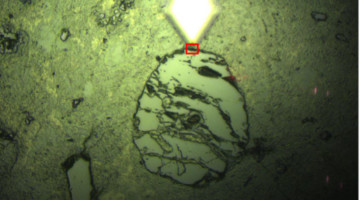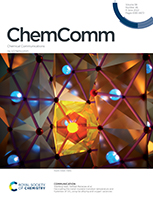Register for the ALS User Meeting, taking place virtually August 15–17. You are also invited to submit a video greeting for Steve Kevan’s retirement celebration. Read more »
All News & Updates
Antoine Wojdyla Receives Prestigious Five-Year Research Grant
Antoine Wojdyla is one of three scientists at Berkeley Lab selected by the U.S. Department of Energy’s Office of Science to receive funding through the Early Career Research Program (ECRP). His project is titled DREAM beam: Diffraction-limited Radiation Enhancement with Adaptive Mirrors for X-ray coherent beamlines. Read more »
Nanoscale Infrared Study of Meteorite Mineralogy
Using a nanoscale infrared probe, researchers found that the minerals in a meteorite—an artifact representing the solar system’s past—were altered by water on very fine spatial scales. The work sheds light on conditions in the early solar system and lays groundwork for analyzing asteroid samples to be returned to Earth by NASA in 2023. Read more »![]()
![]()
A Topological-Insulator Sandwich for Efficient Microelectronics
Researchers synthesized a topological insulator between two ferromagnetic layers and found that it is electronically characterized by a large magnetic band gap. The results open a new path toward lossless charge transport and perfect spin polarization, which could lead to the development of ultralow-energy electronics and spintronics. Read more »![]()
![]()
Decoupling the metal–insulator transition temperature and hysteresis of VO2 using Ge alloying and oxygen vacancies
The VO2 metal–insulator transition underpins applications in thermochromics, neuromorphic computing, and infrared vision. Ge alloying is shown to expand the stability of the monoclinic phase to higher temperatures, and by suppressing the propensity for oxygen vacancy formation, renders the hysteresis of the transition exquisitely sensitive to oxygen stoichiometry. Read more »
Removing Nitrogen from Wastewater using Horizontal Levees
Treated municipal wastewater often contains nitrogen, which has been linked to algal blooms that can devastate coastal ecosystems. In a recent study, researchers characterized the primary nitrogen-removal pathways in a horizontal levee, an engineered subsurface water-treatment system consisting of a gently sloping strip of land adjacent to storm-control levees. Read more »
Pushing the Boundaries of Moore’s Law: How Can Extreme UV Light Produce Tiny Microchips?
For the past 25 years, scientists and engineers from the Center for X-Ray Optics (CXRO) have worked to develop EUV lithography, a technique that enables microchip circuits and transistors that are tens of thousands of times thinner than a strand of human hair. Patrick Naulleau, a CXRO scientist who helped develop EUV lithography, shares his perspective in this Q&A. Read more »
Register for the 2022 JGI Annual Meeting
The DOE Joint Genome Institute’s 2022 Annual Meeting will be a hybrid event held August 29-31, 2022 in Berkeley, Calif. Hear from presenters tackling energy and environmental challenges, many of them supported by the JGI’s User Programs. 2022 also marks the JGI’s 25th Anniversary. Agenda and registration information online. Read more »
Registration Now Open for 2022 User Meeting
This year’s ALS User Meeting will take place August 15–17, once again virtually. Registration is free, and all are welcome. Read more »
Paris Gordon, User Services Office Administrator
Paris Gordon’s love of science started at a young age, as did her connection to Berkeley Lab. Throughout her 24 years here, she has built strong relationships with people from all around the world. Find out more about what she does in the User Office. Read more »
- « Previous Page
- 1
- …
- 36
- 37
- 38
- 39
- 40
- …
- 139
- Next Page »








